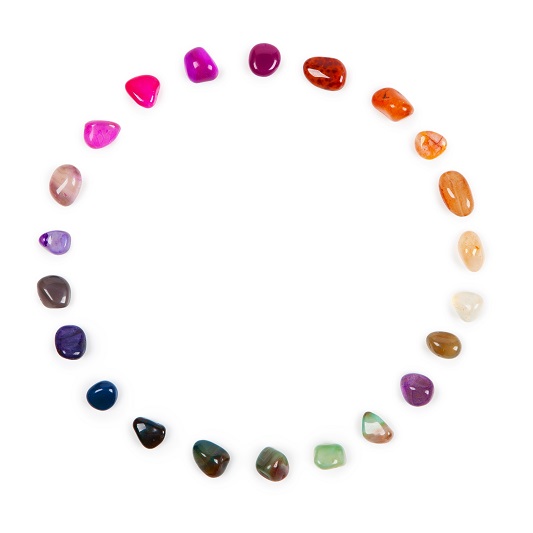Prasiolite, gemstone of the week

JAKE Jewellery for everyone and anyone
17th April 2018
Petrified Wood, Gemstone of the Week
26th April 2018Prasiolite is best described as a green variety of Quartz. Because of this, the mineral is often referred to as ‘Green Quartz’ or ‘Vermarine’, but these are not technically correct. Today, natural deposits of the stone are rare; almost all natural Prasiolite is sourced from a small mine in Brazil, though small deposits are occasionally found in Poland and Canada, too. Much of the Prasiolite on the gemstone market is artificially produced. To create man-made Prasiolite, specific varieties of amethyst are heated to a high tempera-ture. Most amethyst will turn yellow when heated producing citrine; however, the stone will occasionally turn green to produce Prasiolite. With this in mind, even artificially produced varieties of the stone are rare. As man-made Prasiolite is heat treated Amethyst, the mineral is sometimes wrongly referred to as ‘Green Amethyst’. According to the Federal Trade Commission, it’s actually against their guidelines to re-fer to the stone by this name. In this article, we explore Prasiolite in more detail.
How to Identify Prasiolite
As Prasiolite does not have a distinct appearance, the untrained eye can find it hard to identify. However, those with the necessary equipment can identify the mineral from a variety of factors including hardness, durability, and cleavage.
As Prasiolite is a variety of Quartz, it boasts a hardness of 7 on the Mohs scale and rarely exhibits cleav-age. With a similar durability to Citrine, Amethyst, and all varieties of Quartz, the stone is ideal for use in gemstone jewellery. Typically, it is used in bracelets, rings, earrings, necklaces, pins, and even beads. Most professionals can identify Prasiolite through a combination of qualities and colour. Most of the Pra-siolite on the market today is light in colour with minimal saturation. In smaller specimens, the saturation is often so light that the stone appears colourless. Stones with a high level of saturation normally boast the highest value; typically, these specimens are a few carats in size.
Different Colours and Types of Prasiolite
Though most Prasiolite is green in colour, the exact shade of the stone varies. Typically, larger stones boast a higher saturation while the smaller specimens appear almost colourless. As natural Prasiolite is extremely rare, most of the mineral sold today is artificially produced. Usually, this is done through heat-treating Amethyst or, less commonly, Irradiating it. Below, we discuss how Prasiolite is created in more detail.
Heat-Treated Amethyst: Most of the Prasiolite sold today is heat-treated Amethyst. The heat-treating process involves heating Amethyst to around 500 degrees. When the process is complete, the colour of the Amethyst will have changed from purple to green.
Irradiated Amethyst: Irradiating Amethyst can also produce Prasiolite. When this method is used, the mineral produced is light green in colour. If the stone is exposed to high temperatures, the colour is sub-ject to fade. This generally makes irradiated Amethyst less favourable than heat-treated.
Naturally Heated Amethyst: A small amount of Prasiolite is produced naturally. Typically, this occurs when Amethyst has been heated by lava flows or other natural methods.
Where is Prasiolite Found?
Natural Prasiolite was first found in the 19th century in Silesia, Poland. Though the deposits are still found in this location, most of the Prasiolite sold today is sourced from a single Brazilian mine. However, smaller deposits have been found in Canada, Tanzania, Namibia, Zambia, and the USA.
Healing Properties of Prasiolite
Like most gemstones, Prasiolite boasts a wide variety of healing properties. When used for crystal heal-ing, the stone connects with the heart chakra. By healing and cleansing the chakra, it can help to heal and stabilize the emotions. With the ability to turn negative energy into positive, Prasiolite is popular amongst those suffering from anxiety and depression. In addition to balancing emotions, Prasiolite can cleanse and balance the physical body.
Physically, Prasiolite can combat digestive issues and relieve nausea. With this in mind, the mineral is beneficial to those suffering from digestive disorders such Crohns Disease, IBD, and IBS. Working to cleanse all the major organs, the stone can be used for a wide variety of different illnesses. Reliving fa-tigue and bone pain, it is thought to be particularly beneficial for chronic fatigue, depression, arthritis, and bone injuries.
Emotionally, Prasiolite is thought to alleviate brain-fog and provide clarity in times of stress. Helping the beholder to retain information, the mineral is also good for those studying at school, college, or universi-ty. Promoting clear thinking, the stone can also be used to recall memories; this makes Prasiolite ideal for those suffering from Dementia or Alzheimer’s.
Spiritually, Prasiolite can be used for psychic healing. In addition to cleansing the chakras, the stone works to align the subtle bodies. With this in mind, it is often used alongside meditation or spiritual communica-tion. Additionally, Prasiolite can be used to enhance psychic abilities and to protect aura. Absorbing nega-tive energy, it can also be beneficial to those subjected to radiation or smog.
In Summary
High-quality Prasiolite is popular worldwide. Today, the most notable deposits of the stone are found in Brazil, though the mineral can also be found in Poland, Canada, Tanzania, and the USA. Loved for its vi-brant green colouring and durable nature, good-quality Prasiolite is often used in gemstone jewellery. Whether you’re hoping to use the stone for its benefits within crystal healing or you’re looking for a beau-tiful new addition to your jewellery collection, purchase a piece of Prasiolite to reap the benefits.




